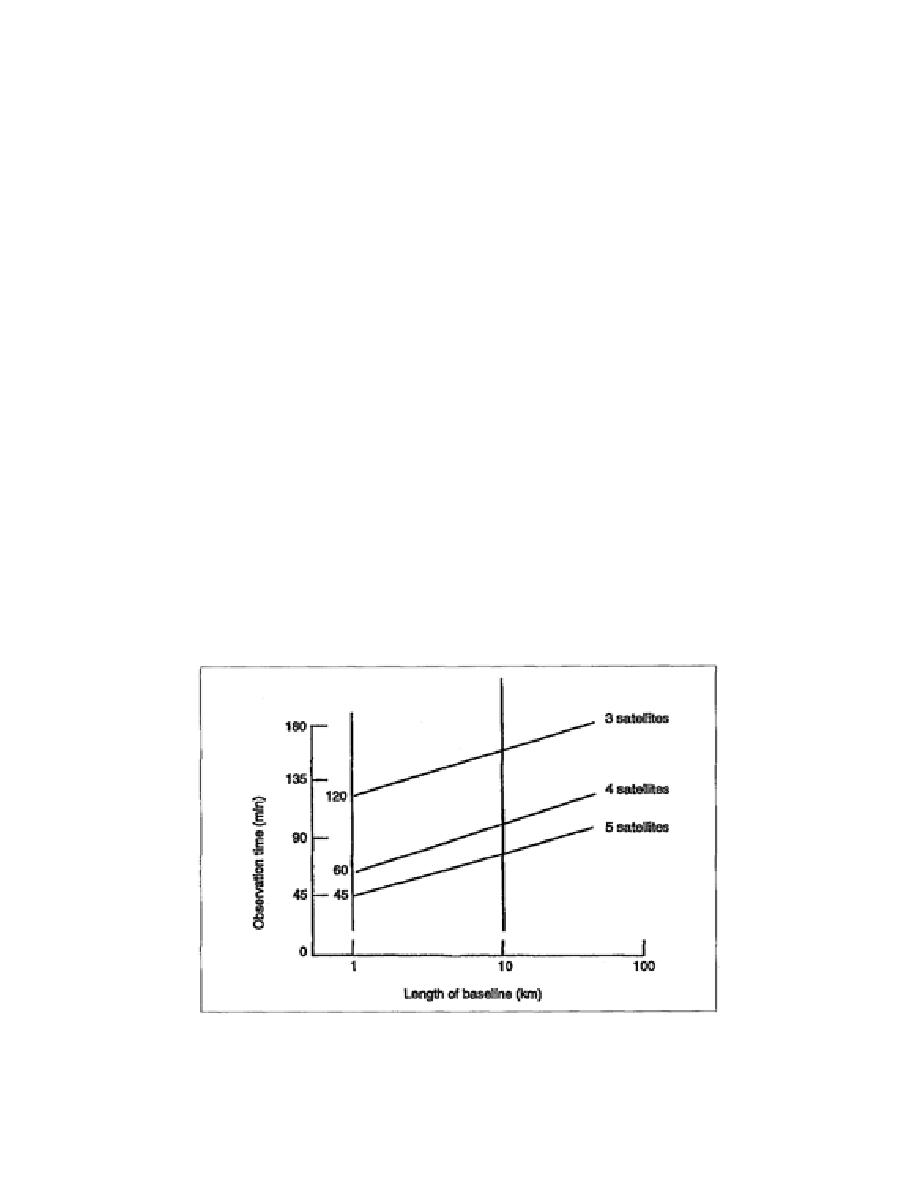
All carrier phase relative-surveying techniques, except OTF/RTK, require postprocessing of
the observed data to determine the relative baseline vector differences. OTF/RTK can be
performed in real time or in the postprocessed mode. Postprocessing of observed satellite
data involves the differencing of signal phase measurements recorded by the receiver. The
differencing process reduces biases in the receiver and satellite oscillators and is performed
in a computer. When contemplating the purchase of a receiver, the computer requirements
necessary to postprocess the GPS data must be considered. Most manufacturers require a
personal computer (PC) with a math coprocessor. All baseline reductions should be
performed in the field (if possible) to allow an onsite assessment of the survey adequacy.
a. Static Surveying. Static surveying is the most common method of densifying project network
control. Two GPS receivers are used to measure a GPS baseline distance. The line between a pair of
GPS receivers from which simultaneous GPS data have been collected and processed is a vector referred
to as a baseline. The station coordinate differences are calculated in terms of a 3D ECEF coordinate
system that utilizes X, Y, and Z values based on the WGS-84 ellipsoid. These coordinate differences are
then subsequently shifted to the local-project coordinate system. GPS receiver pairs are set up over
stations of either known or unknown locations. Typically one of the receivers is positioned over a point
whose coordinates are known (or have been carried forward as on a traverse) and the second is
positioned over another point whose coordinates are unknown, but desired. Both GPS receivers must
receive signals from the same four (or more) satellites for a period of time ranging from a few minutes
to several hours, depending on the conditions of observation and the precision required.
(1) Station occupation time is dependent on the baseline length, the number of satellites
observed, and the GPS equipment. A good approximation for a baseline occupation of 1 to 30
kilometers is 30 minutes to 2 hours. A rough guideline for estimating station occupation time is shown
in Figure 5-5.
Figure 5-5. Station Occupation Time
EN0593
5-28



 Previous Page
Previous Page
